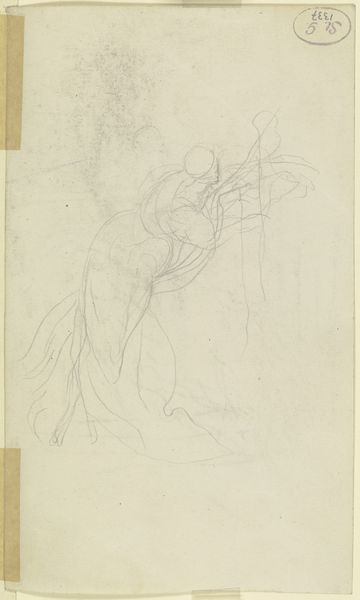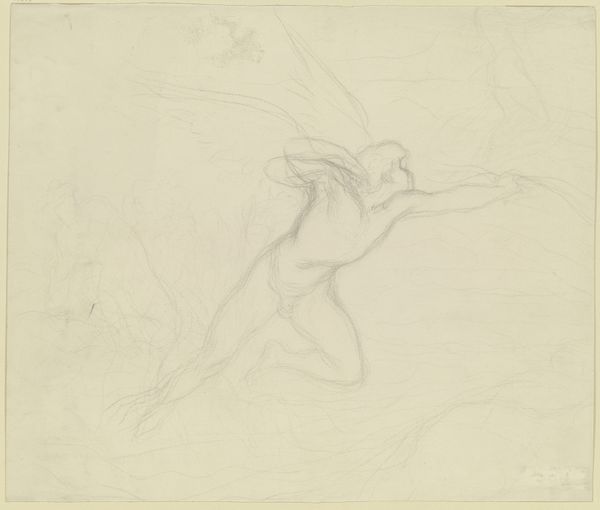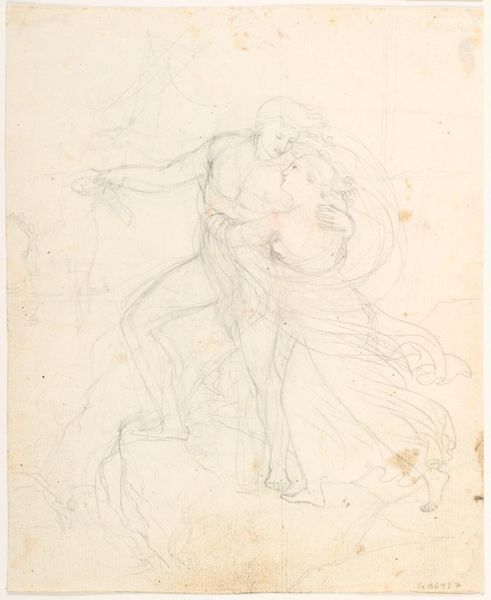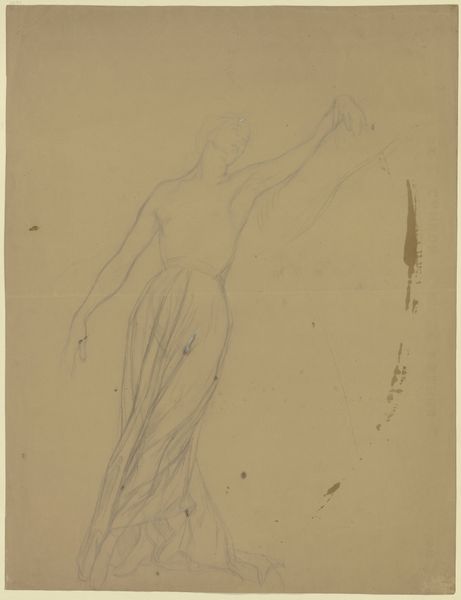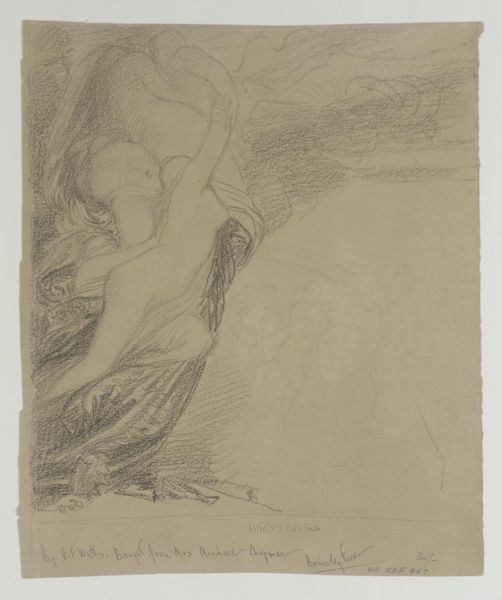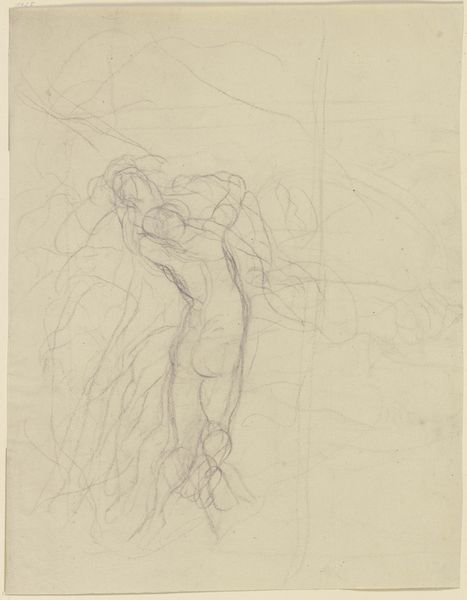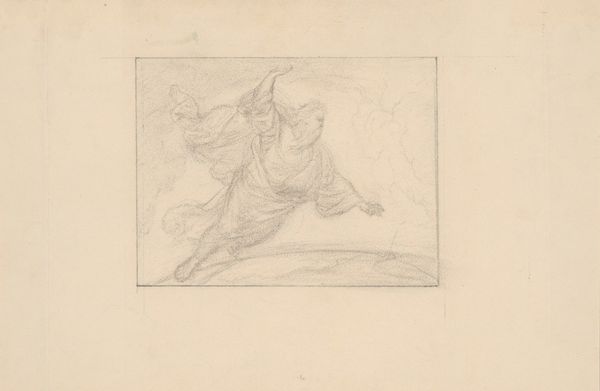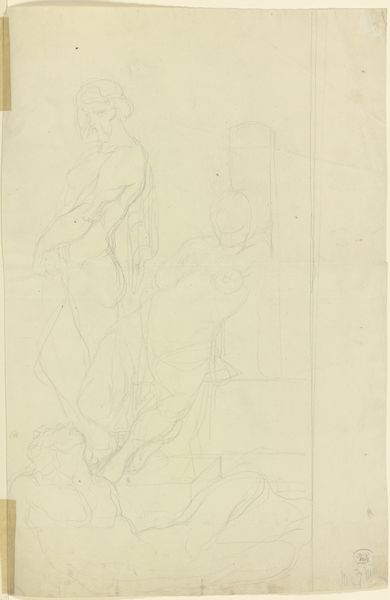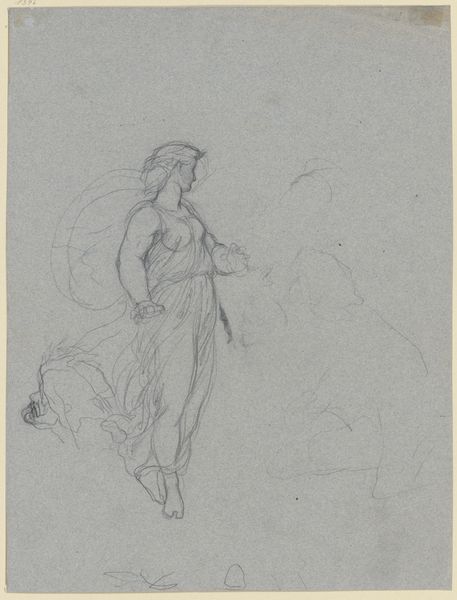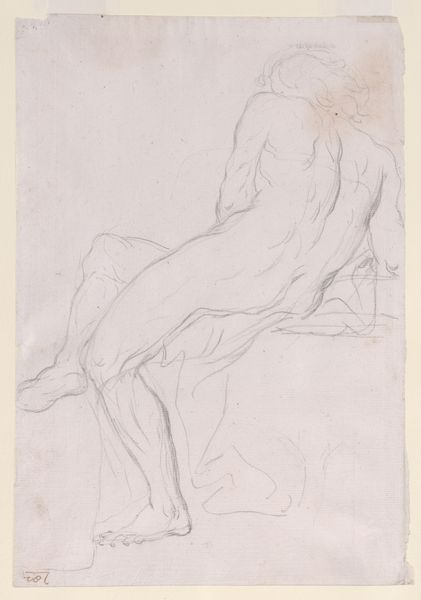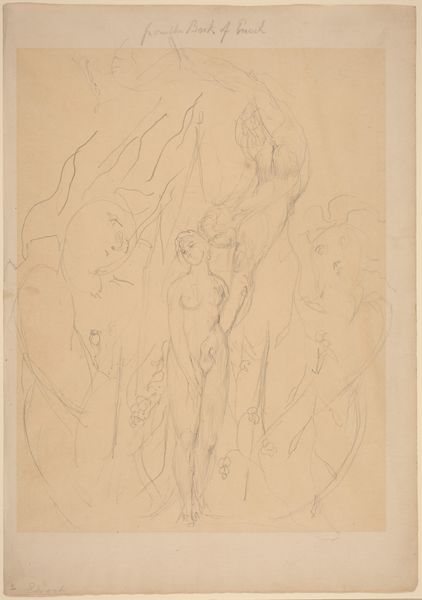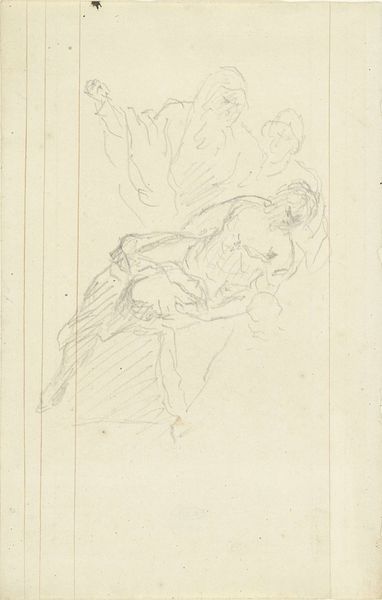
Copyright: Public Domain
Editor: This is Moritz von Schwind’s "Kneeling Man During the Sängerkrieg," made with pencil on paper around 1854-1856. It feels…unfinished, almost frantic in its energy. What do you see in this piece, especially given its historical context? Curator: The sketch captures the raw emotion surrounding the Sängerkrieg, or the "Singers' War," a legendary song contest held at Wartburg Castle. But it’s more than just illustrating a historical event. It reflects the anxieties of a rapidly changing 19th-century Germany grappling with its national identity. The kneeling man—does he embody reverence, defeat, or perhaps a struggle between the two? How might his posture, even in its sketched form, relate to notions of masculine vulnerability during this period of nation-building? Editor: That's fascinating. I hadn't considered the tension within the figure himself. It makes me think about how Romanticism often dealt with inner turmoil. Curator: Exactly! And think about who participates in these nationalistic narratives and who is excluded. Were women included, and how did ideas about race play into constructions of German identity at this time? This wasn't just a singing competition; it was a performance of power, exclusion, and idealization. How does von Schwind subtly critique or perpetuate those dynamics in his depiction? Editor: I guess the sketch’s unfinished quality reflects the incompletion of national identity. It's like the figure is still in the process of defining himself within this narrative. Curator: Precisely. It's a work that opens up complex questions about performative nationalism and individual agency. Editor: Seeing it that way really shifts my understanding of Romanticism. Thanks! Curator: It makes us consider beyond idealized beauty and contemplate socio-political dynamics and hidden narratives.
Comments
No comments
Be the first to comment and join the conversation on the ultimate creative platform.
